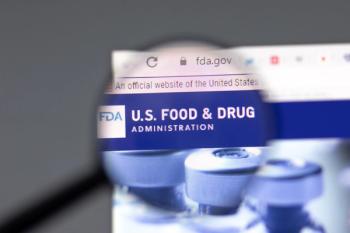
- Applied Clinical Trials-09-01-2004
New Data Standards and Policies Aim to Spur Clinical Research
FDA encourages clinical data e-submission and boosting development of new therapies to combat bioterrorism, cancer, and obesity.
FDA encourages clinical data e-submission and boosting development of new therapies to combat bioterrorism, cancer, and obesity.
Health and Human Services secretary Tommy Thompson is striving to launch a long-term health care information technology strategy before he leaves Washington at the end of the year. The Medicare Modernization Act (MMA) requires the government to establish technical standards for an electronic pharmaceutical prescribing system, and the Food and Drug Administration is pursuing a number of initiatives to support this process.
Standards for clinical data
At the national Health IT summit in July, FDA acting commissioner Lester Crawford announced a policy that encourages sponsors to file data from drug trials using a standard format, the Study Data Tabulation Model (SDTM), developed by the Clinical Data Interchange Standards Consortium (CDISC). This uniform framework for clinical trial tabulations aims to accelerate clinical research by automating the largely paper-based clinical research process and to more easily integrate data from various sources.
The SDTM standard is one of several FDA electronic health information initiatives designed to further the shift from paper to e-filings [see sidebar on "Common Language"]. Last December (2003) FDA issued a new rule requiring manufacturers to submit product labeling information electronically when filing new drug applications, supplements, and annual reports. FDA plans to transmit the e-labeling data to the National Library of Medicine, which will make the information available electronically to all users through its DailyMed system.
The new e-labelling policy makes a major change by requiring manufacturers to adopt a new Structured Product Labeling (SPL) format instead of submitting data in PDF (portable document format). To help industry implement this new system, FDA is accepting e-labeling data in either PDF or SPL until the agency establishes the necessary regulations, standards, and systems needed to switch labeling content from PDF to SPL, which it hopes to do over the next two years.
IT experts are enthusiastic about SPL as a way to spread consistent labeling information more quickly and more broadly. Trial sponsors similarly consider the SDTM standard for filing clinical data a positive step but recognize that it will take considerable work to achieve a fully seamless electronic system for collecting, evaluating, and submitting study data to regulatory authorities. CDISC, an open, non-profit organization, has been working on this standard for several years. The current version provides a model for submitting case report tabulations to FDA that fits the format of the Common Technical Document (CDT) established by the International Conference on Harmonization (ICH).
FDA has pilot tested SDTM for human drug studies and feels it is "ready to implement on a voluntary basis," says Randy Levin, director for health and regulatory data standards at the agency. The agency is beginning to receive data in SDTM, and Levin believes the new system will be particularly useful for sponsors receiving data from different sources. FDA also plans to test the standard for use in animal studies and other FDA regulated products.
The issue for sponsors and research organizations is where to "map into the SDTM model" at this point in its development, comments Jane Light, consultant to data management firm Integic Corp. Sponsors have to decide either to completely update their clinical database to incorporate SDTM or to export data in other formats to be revised for submission to FDA. She expects large pharma companies to conduct pilots to test the feasibility and reliability of the SDTM model. "Standards are very good," Light comments, "but it will take a while to get there."
Encouraging new therapies
More efficient processes for submitting clinical data and labeling information to FDA should help the agency process what it hopes will be a growing number of applications for cutting-edge medical products. HHS, FDA, and Congress have taken a number of actions in recent months to encourage biomedical R&D:
Approved legislation to spur development of new vaccines and treatments to protect against biological warfare. After almost two years of disputes and delay, President Bush signed Project BioShield legislation in July. The measure provides $5.6 billion over 10 years for the federal government to purchase new vaccines and countermeasures to biological and chemical warfare for national stockpiles. In addition to establishing a secure funding source for government purchase of critical biomedical countermeasures, the legislation also permits the National Institutes of Health (NIH) to expedite approval of grants for countermeasure R&D; gives FDA authority to allow emergency use of not-yet-approved countermeasures; and calls for speedy FDA approval of these products. FDA already is encouraging sponsors to come in for "pre-pre IND" (investigational new drug) application meetings involving possible counterterrorism products. The aim is to ensure that researchers collect the right data in early clinical and pre-clinical studies.
HHS already is negotiating with manufacturers to develop 75 million doses of an improved anthrax vaccine worth some $700 million and is soliciting bids for the development of antitoxin treatments for inhalation anthrax disease. The government also seeks antidotes and other products to treat and protect against smallpox, botulism, plague, Ebola virus, and radiation from "dirty bombs."
A main shortcoming of the bill from the point of view of sponsors is that it fails to include liability protections for companies if counter-terror vaccines or drugs cause adverse events. As a result, big pharma companies generally are holding off on major investment in bioterror contracts, leaving the field to smaller biotech manufacturers.
Legislators and industry already are talking about a BioShield II bill that would provide liability protection for manufacturers and additional incentives for product development. One idea is to offer "wild card" patent extensions; i.e., the opportunity to apply a two-year patent extension to an unrelated patent.
Development of counter-terrorism treatments also may become a political campaign issue. In June, Democratic presidential candidate John Kerry called for building a "medical arsenal of democracy" by speeding the transition from basic discovery to clinical trials for new drugs and vaccines.
Fighting obesity. Thompson also announced in July a change in Medicare policy that encourages R&D for weight-loss interventions. HHS opened the door for Medicare to cover anti-obesity products and treatments by eliminating language from its coverage policy that stated that obesity is not an illness. This shift is expected to influence coverage decisions by private plans and payers, creating a much broader market for therapies able to provide scientific evidence of their ability to improve health outcomes.
At the World Obesity Congress in July, Crawford outlined FDA efforts to combat obesity, mentioning some of the medical problems associated with past weight-control therapies such as amphetamines and dexfenfluramine. Because the medical community now has very few effective treatments for obesity, an FDA Obesity Working Group has been exploring ways to promote new product development. Crawford noted that agency experts believe that head-to-head comparisons of new and existing treatments "are critical for progress," and that there is a need to discuss design of studies for combination therapies. At a meeting this month (September), FDA's Endocrinologic and Metabolic Drugs Advisory Committee will begin this effort by reviewing a 1996 FDA draft guidance that tried to set a framework for developing chronic-use weight-loss drugs.
Spurring oncology research. A year ago, FDA and the National Cancer Institute (NCI) announced a broad range of collaborative initiatives to facilitate development of new cancer therapies [see "View from Washington," August 2003]. As part of this effort, FDA and NCI held a joint conference in July (2004) on research strategies and clinical trial designs for biomarkers to validate diagnosis and early detection of cancer.
FDA also is moving to streamline its oversight of oncology therapies. The agency is establishing a new Office of Oncology Drug Products (ODP) that combines three divisions of the Center for Drug Evaluation and Research (CDER): Division of Oncology Drug Products, Division of Therapeutic Biological Oncology Products, and the Division of Medical Imaging & Radiopharmaceutical Drug Products. FDA has launched a national search for a director of the new office that will house a critical mass of over 100 staffers.
While the reorganization does not really expand or radically alter FDA operations, the change aims to provide more consistent reviews and policies in this area, including decisions on which applications merit accelerated approval status. ODP also will run an Oncology Program to advise other FDA centers and outside organizations on new products, policies and standards. FDA aims to fully implement this change by April 2005, when much of CDER moves to FDA's new White Oak facility.
SIDEBAR: Common Language
The latest wrinkle in the health information standards area is deciding what medical terminology will provide the basis for e-prescribing and e-data filing. FDA has spent the last decade working through the ICH to gain international acceptance of the MedDRA (Medical Dictionary for Regulatory Activities) system for submitting information to regulatory authorities. Since 1997, FDA has encouraged manufacturers to use MedDRA to describe medical conditions, symptoms, laboratory tests, and other items in filing adverse event reports, market applications, and other documents.
But in April, HHS secretary Thompson announced that federal e-health communications should be based on SNOMED CT (Systemized Nomenclature of Medical Clinical Terms), which was developed by the American College of Pathologists and will be available from HHS free to all users. FDA officials say they are sticking to MedDRA for now, but are examining opportunities for "mapping efforts" that will link MedDRA to SNOMED.
Articles in this issue
about 21 years ago
FDA inspections Outside the USA: An Eastern European Perspectiveabout 21 years ago
eShowcaseabout 21 years ago
What Do We Know About Clinical Trials?about 21 years ago
Protocol Appraisal: A Study Site's Viewpointabout 21 years ago
Clinical Trials in CEE: Harnessing the Potentialabout 21 years ago
The Slow but Steady Pace of EU GCP RulesNewsletter
Stay current in clinical research with Applied Clinical Trials, providing expert insights, regulatory updates, and practical strategies for successful clinical trial design and execution.






.png)



.png)



.png)
.png)
